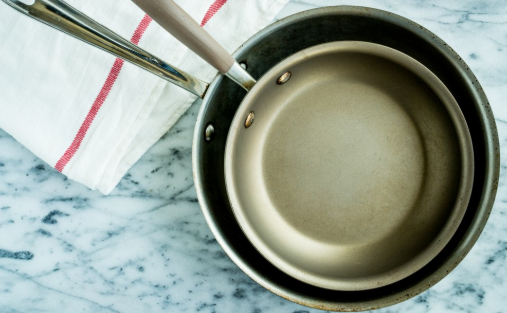 When to Use Nonstick
When to Use Nonstick Egg panes
Sensitive fish (firmer fish like fish and salmon are fine in a tempered steel container)
Sloppy, gooey things like quesadillas
Pan-seared Asian rice noodles
When to Use Stainless Steel
Pan-sears
Sauteed vegetables
Burned meat, chicken and fish
Sauces
Step by step instructions to Use Nonstick and Stainless-Steel Pans
Nonstick
You generally need a flimsy covering of fat in a nonstick pan in case you're preheating it, with the goal that the warmth doesn't get down to business straightforwardly on the synthetic compounds in the nonstick covering. They additionally shouldn't be warmed a lot above medium.
Taking a little care with your nonstick container will broaden their life. Despite the fact that many are presently touted as panwater safe, on account of sturdier completions, it's a smart thought to wash them by hand. panwashers can be excessively grating on most nonstick completions.
A word about wellbeing: Nonstick cookware is dubious, even the more up to date "green" wraps up. The Environmental Working Group urges cooks to keep away from it however much as could reasonably be expected on the grounds that per-or poly-flurochemicals (PFCs), a group of synthetic substances used to make surfaces nonstick (counting cookware, dress and covers) has been connected to an assortment of medical issues. Teflon, which can cause flulike side effects from breathing exhaust discharged by an overheated pan.
Stainless Steel
Not at all like nonstick pan, you really need to pre-heat treated steel pan. Warming the container over medium heat before including fat or nourishment makes the cells extend and make a slicker surface. At that point whirl in your oil and hold up until it, as well, is warmed through. That basically gives both of you regular layers of "nonstick" covering that does something amazing for most nourishments.
When the pan and the oil are warmed, include anything that you're cooking. In case you're burning something like pork cleaves, make certain to leave a lot of room between them for air to course with the goal that each piece can darker. Else, they'll simply steam and will never get that exquisite bronze hull. Same goes for sauteing … don't swarm the pan.
In the event that it appears as though nourishment is staying, disregard it for a piece … it will unstick itself once it's completely ready. Truth be told, when you put your nourishment in and give it an underlying hurl (if sauteing or sautéing), simply leave the container. In the event that you futz with it again and again, you'll shield it from shaping that wonderful covering. In addition, life is simply simpler that way.
With regards to cleaning tempered steel cookware, some portion of that activity is done when you deglaze the container to fuse any of the delectable affectionate into the pan.
For any of you who have been terrified of spotless, I trust this makes a difference! Also, in the event that you haven't yet spread out into the non nonstick domain, try it out.